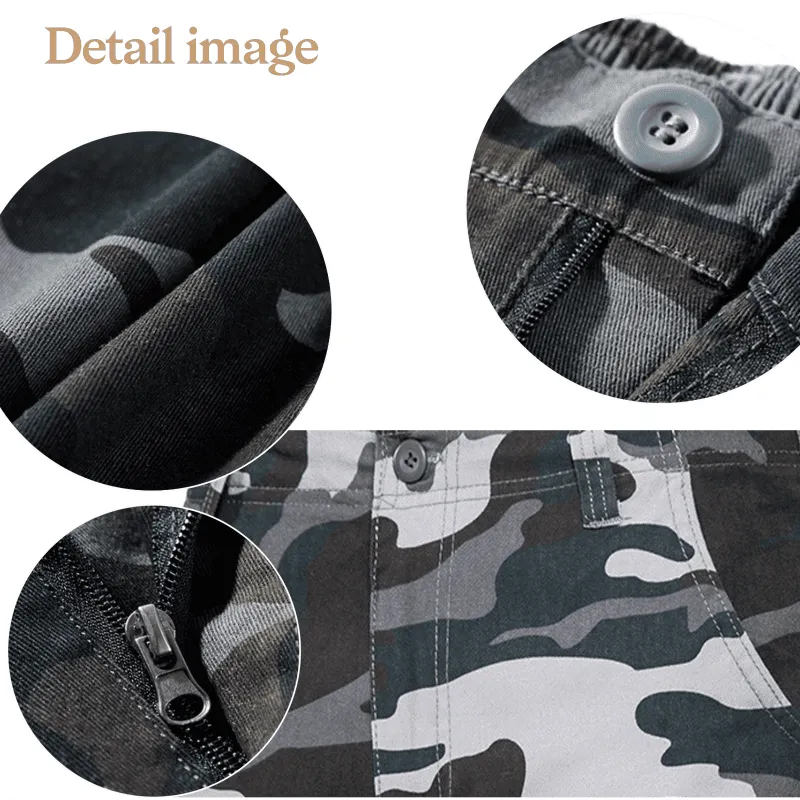Suriin ang Iyong Mga Pangangailangan sa Negosyo at Mga Layunin sa Produksyon
Tukuyin ang Iyong Uri ng Produkto at Mga Pamantayan sa Kalidad
Mahalaga na malinaw kung anong klase ng damit ang gusto nating gawin bago magsimula ng produksyon. Titingnan ba natin ang activewear, business attire, o baka naman eco-friendly na damit na umaangkop sa mga binibili ng mga tao ngayon? Ayon sa market research, may ilang kategorya na trending habang ang iba naman ay bumababa depende sa season. Hindi lang basta sumunod sa mga alituntunin ang pagtatakda ng quality targets. Tingnan kung ano ang ginagawa ng mga kumakatunggali at kausapin ang mga tunay na customer tungkol sa kanilang mga pangangailangan. May mga gabay din na inilalathala ng mga samahan sa fashion, kaya dapat kasama ito sa ating proseso ng pagpaplano. At huwag kalimutan ang pagkuha ng certification mula sa mga programa tulad ng ISO para sa quality control. Ang mga opisyal na stamp na ito ay nangangahulugan na ang ating produkto ay sumusunod sa pandaigdigang pamantayan, na nagpapalakas ng tiwala ng mga mamimili at nagpapakita na ang ating brand ay mapagkakatiwalaan sa mahabang panahon.
Tukuyin ang Dami ng Kailangan at Kakayahang Umunlad
Ang paglilinaw kung ano ang uri ng dami ng produksyon na pinag-uusapan at kung gaano kalaki ang ating operasyon ay magpapasya sa tagumpay ng manufacturing. Habang binabasa ang sales projections, maraming kompanya ang nagsisimula sa simpleng market research pero dapat talaga silang lumingon nang mas malalim sa mga uso sa industriya at sa pagganap ng kanilang mga kakompetensya. Ang isang mabuting paraan para maunawaan ang tunay na pangangailangan sa produksyon ay ang tingnan kung ano ang mga naging kaya ng ibang negosyo sa parehong larangan. Mahalaga rin na pag-usapan nang maaga ang mga opsyon para sa scalability kasama ang mga manufacturer. Nakita namin ang mga kaso kung saan inakala ng mga kompanya na kayang-kaya ng kanilang kasalukuyang supplier ang paglaki, pero nang dumating ang biglaang pagtaas ng mga order ay hindi pala ito totoo. Ang totoong datos mula sa mga kaparehong negosyo ay nagbibigay ng mas matibay na basehan kaysa sa paghula-hula lamang. Ilagay mo pa dito ang ilang seryosong case study o mga bagong market report at biglang hindi na abstract na numero ang mga ito at naging konkretong kasangkapan na para sa pagpaplano.
Panghuling Pagsusuri sa Kakayahan ng Tagagawa sa Pagprodyus
Pinakamaliit na Dami ng Order (MOQ) at Kaluwagan
Alam kung ano talaga ang ibig sabihin ng Minimum Order Quantity (MOQ) ng isang tagagawa ng damit ay nagpapaganda nang malaki kapag sinusubok na iugma ang mga pangangailangan sa produksyon sa mga pondo na available. Maging mahirap ang pamamahala ng stock kapag nakikipag-ugnayan sa mababang MOQs, kaya't nakabubuti na suriin kung ang mga supplier ay handang baguhin ang laki ng order batay sa nangyayari sa merkado ngayon. Ang ilang mga brand ay nakapagtatag ng maayos na kasunduan kung saan nakakakuha sila ng mas maliit na paunang order pero nananatiling maayos ang kanilang ugnayan sa mga tagagawa. Mayroon din namang nakakahanap ng paraan upang i-grupo ang mga produkto mula sa iba't ibang koleksyon upang matugunan ang pinakamababang mga kinakailangan nang hindi nababara. Ang pangunahing punto ay ang pagkakaroon ng kaunting kalayaan sa MOQ ay nakatutulong sa mga negosyo upang manatiling mapagkumpitensya habang patuloy na nagbabago ang mga uso sa fashion sa buong taon.
Kakayahan sa Materyales at Pag-integrate ng Teknolohiya
Ang pagtingin sa kung anong mga uri ng materyales ang may karanasan ang isang tagagawa ay nagsisiguro na ginagamit nila ang mga magagandang quality na tela sa paggawa ng mga produkto. Ang isang kumpanya na talagang marunong sa pagpili ng mga tela at alam kung saan makuha ang mga ito ay magpapakita ng mas mahusay na kalidad ng mga produkto. Mahalaga rin na suriin kung anong mga teknikal na kagamitan ang ginagamit ng isang tagagawa para sa mas mabilis na produksyon. Sa kasalukuyan, ang mga lugar na namumuhunan sa mga automated system at digital na proseso ay karaniwang mas maayos sa operasyon. Halimbawa, ang mga tindahan na gumagamit ng 3D design software kasama ang awtomatikong cutting equipment ay kadalasang nakakatapos ng trabaho nang mas mabilis habang nababawasan ang basura ng materyales. Ito ay nagpapakita kung gaano karami ang nagbago sa paraan ng pagmamanupaktura sa iba't ibang industriya dahil sa modernong teknolohiya.
Patunayan ang Pagsunod at Mga Etikal na Kasanayan
Mga Sertipikasyon sa Tuklas at Mga Proseso na Matibay sa Kalikasan
Marami itong kinalaman kung ang isang tagagawa ay talagang may pakialam sa pagpapatakbo ng negosyo nang mapanagutan at naaayon sa kalikasan. Tingnan kung anu-anong sertipikasyon ang kanilang nakapaskil sa pader GOTS, OEKO-TEX ang mga badge na ito ay nagpapakita ng tunay na pangako sa mga pamantayan ng berdeng produksyon. Masusi ring tingnan kung paano nila hinahawakan ang basura at pinamamahalaan ang mga likas na yaman. Nagrerecycle ba sila ng mga materyales? Nagbabawas ba sila ng paggamit ng tubig? Ito ay nagsasabi sa atin ng kanilang tunay na dedikasyon sa pangangalaga ng kalikasan. Marami nang tao sa kasalukuyang panahon ang nais bumili mula sa mga kumpanya na isinasagawa ang sinasabi nila pagdating sa pagmamapanatag ng kapaligiran, kaya ang paghahanap ng isang tagagawa na nagbabahagi ng ganitong halaga ay mabuting gawin para sa negosyo.
Mga Pamantayan sa Trabaho at Katinuan ng Suplay Chain
Kapag tinitingnan ang isang tagagawa ng damit, mahalaga na suriin kung ano ang kanilang ginagawa tungkol sa kondisyon ng mga manggagawa at kung gaano sila bukas sa pinagmulan ng mga bagay. Nakakatanggap ba ng patas na sahod ang mga manggagawa? Totoo bang sinusunod ng kumpanya ang mga regulasyon sa paggawa? Ang pagiging transparent tungkol sa mga bagay na ito ay nakatutulong sa pagpapanatili ng etikal na pamantayan sa buong proseso ng paggawa ng damit. Patuloy na binabanggit ng mga grupo na naka-monitor sa mga gawain ng industriya ang kahalagahan nito sa paglikha ng mas patas na sistema. Ang mga kumpanyang nananatiling bukas sa kanilang supply chain ay karaniwang mas umaangkop sa kagustuhan ng mga konsyumer ngayon at nagpapaseguro na ang kanilang mga produkto ay hindi nagmumula sa mapagsamantala ring sitwasyon.

Suriin ang Istraktura ng Gastos at Mga Tuntunin sa Pagbabayad
Malinaw na Pagpepresyo at Pag-iwas sa Nakatagong Bayad
Mahalaga na maintindihan kung paano gumagana ang presyo lalo na kapag nakikitungo sa mga tagagawa ng damit. Karamihan sa mga tao ay hindi nakakaalam na may mga karagdagang singil na nakatago sa likod. Maaaring makatipid ng problema sa hinaharap kung hihingin ang buong breakdown ng mga gastos bago lagdaan ang anumang dokumento, lalo na kapag lumitaw ang mga hindi inaasahang bayarin. Kapag nagsisimula nang makipag-usap sa mga supplier, mainam na talakayin ang mga paksa tulad ng pinakamababang dami ng order, gastos sa kagamitan, at dagdag sa pagpapadala upang lahat ay may malinaw na ideya kung saan sila nakatayo. Mahalaga rin na suriin kung ano ang margin ng tubo na idinagdag ng pabrika sa kanilang basehang gastos sa produksyon. Ito ay magbibigay ng mas malinaw na pag-unawa kung ang kanilang singil ay nasa loob ng karaniwang saklaw sa industriya o kung may anumang hindi karaniwan.
Milestone Payments vs. Upfront Costs
Mas makatutulong para sa mga negosyo na tingnan ang iba't ibang paraan ng pagbabayad. Karaniwang mas epektibo ang mga pagbabayad batay sa milestone kaysa sa pagbabayad ng lahat nang una. Ang paraan ay simple lamang: nagbabayad ang mga kliyente kapag natapos na ang ilang bahagi ng gawain. Ano ang mabuti sa ganitong paraan? Panatilihin nito ang lahat na nasa tamang landas habang nasa produksyon. Alam ng mga manufacturer na kailangan nilang maibigay nang maayos ang bawat yugto bago sila makatanggap ng bayad dito. Mula sa pananalaping aspeto, mas maganda ring pamahalaan ng mga kumpanya ang kanilang pera sa paraang ito. At pinakamahalaga, mas masigasig ang mga manufacturer na sumunod sa pamantayan ng kalidad at takdang oras kapag unti-unti ang pagbabayad kaysa sa isang beses lamang sa simula.
Bigyan-priyoridad ang Komunikasyon at Kahirapan sa Logistika
Epekto ng Lokasyon sa Lead Times at Gastos sa Pagpapadala
Nakakaapekto sa bilis ng pagdating at sa gastos ng pagpapadala kung saan ginawa ang mga damit. Kapag malapit ang mga manufacturer sa lugar kung saan bumibili ang mga tao, makikita ang malaking pagkakaiba sa oras ng paghihintay. Mga Produkto hindi na kailangang maglakbay pa ng mahabang distansya. Dahil malapit na lang, mabilis na makakatugon ang mga pabrika kung may problema sa suplay ng mga sangkap. At dahil maikli lang ang biyahe, mas mababa ang mga emissions mula sa transportasyon, na nakakatulong naman sa kalikasan.
Mga Digital na Kasangkapan para sa Real-Time na Pagsunod sa Produksyon
Ang pagpapatupad ng mga digital na kasangkapan para sa real-time na pagsunod sa produksyon ay lubos na nagpapahusay ng komunikasyon at kahusayan sa logistik. Paano nakikinabang ang mga negosyo sa teknolohiyang ito? Ang mga solusyon tulad ng PLM (Product Lifecycle Management) software ay nagrerebolusyon sa pagsunod, na nagbibigay-daan sa mga manufacturer na masundan nang mabuti ang mga yugto ng produksyon. Ang agarang pagkakitaan sa supply chain ay nagsisiguro ng matalinong paggawa ng desisyon at tumpak na operasyon.
Suriin ang Fleksibilidad para sa mga Hinihingi ng Merkado
Amaaayon sa Mga Pagbabago sa Disenyo at mga Kaugnay na Kahilingan
Para sa mga tagagawa ng damit, mahalaga ang kakayahang baguhin ang disenyo at magawa ang mga espesyal na kahilingan upang mapanatili ang interes ng mga customer. Kailangan ng mga tagagawa ngayon ang paraan para mabilis na maiba ang kanilang mga produkto. Ang pagiging matatag ay nangangahulugan ng pagbabago sa istilo ng mga damit at pag-aalok ng mga personalized na opsyon na umaangkop sa tunay na pangangailangan ng mga tao. Hindi lang naman ito tungkol sa pagtugon sa uso. Kapag nakapag-ayon ang mga kumpanya ng kanilang mga alok batay sa partikular na kahilingan, mas lumalakas ang ugnayan nila sa kanilang mga kliyente sa paglipas ng panahon. Isipin kung paano ang mga brand na nagpapapili ng kulay ng tela o nagpapadedma ng personal na detalye ay nakakabuo ng tapat na sumusunod dahil naramdaman ng mga mamimili na sila ay pinapakinggan at pinahahalagahan.
Mga Plano sa Kalamidad para sa Mga Pagkagambala sa Suplay ng Chain
Ang kakayahan ng isang tagagawa na pamahalaan ang mga pagkagambala sa suplay ng chain sa pamamagitan ng mga panukalang pangkaligtasan ay mahalaga. Paano matitiyak ng mga plano ito? Ang mga estratehiya sa pamamahala ng panganib tulad ng pagpaparami ng batayan ng mga supplier at pagpanatili ng stock ng mga pangunahing materyales ay maaaring kapaki-pakinabang. Ang mga proaktibong hakbang na ito ay nagpoprotekta sa operasyon laban sa posibleng mga pagkaantala.
Mga Audit sa Pabrika at Mga Tseke sa Sanggunian
Ang paggawa ng mga audit sa pabrika ay mahalaga upang matiyak ang pagtugon sa mga pamantayan ng kalidad at etikal na kasanayan. Paano binabawasan ng mga audit ang mga panganib? Suriin ang kahusayan ng operasyon ng tagagawa at pagtutugma sa mga regulasyon sa kaligtasan at paggawa. Bukod dito, ang paggawa ng mga tseke sa sanggunian kasama ang mga nakaraang kliyente ay nagbibigay-daan sa mga negosyo na masukat ang katiyakan at pagganap.
Mga Pananggalang sa Kontrata para sa Garantiya ng Kalidad
Ang paglalagay ng mga pangangalaga sa kontrata sa mga kasunduan ay nagpapanatili ng pagtugon sa mga pamantayan sa kalidad at nagpoprotekta sa mga interes ng negosyo. Ano-ano ang dapat isama sa mga kontrata? Dapat tiyak na ilahad ng mga kontrata ang inaasahang kalidad, mga sukatan ng pagganap, at mga kahihinatnan ng hindi pagsunod. Ang epektibong pamamahala ng mga panganib ay nagpapanatili ng mataas na pamantayan sa sektor ng pagmamanupaktura.
Seksyon ng FAQ
Ano-ano ang benepisyo ng pagkamit ng ISO certifications sa produksyon ng damit?
Ang pagkamit ng ISO certifications ay nagsigurado na ang iyong mga produkto ay nakakatugon sa pandaigdigang pamantayan, itinaas ang kredibilidad ng brand at tiwala ng mga konsyumer.
Bakit mahalaga ang pag-unawa sa Minimum Order Quantity (MOQ)?
Mahalaga ang pag-unawa sa MOQ dahil ito ay nag-uugnay sa iyong mga layunin sa produksyon at badyet, nakakaapekto sa pamamahala ng imbentaryo, at gastos.
Paano nakakaapekto ang heograpikong lokasyon ng isang tagagawa sa lead times?
Nagpapababa nang malaki ang lokal na pagmamanupaktura sa lead times at pinahuhusay ang tugon ng supply chain, nag-aambag sa mas mababang gastos sa pagpapadala.
Bakit pinipiling magbayad sa mga milestone kaysa sa paunang gastos?
Ang mga pagbabayad sa milestone ay binabawasan ang panganib na kaugnay ng kalidad at timeline ng produksyon, na nagsisiguro ng mas mahusay na pamamahala ng cash flow at accountability.
Talaan ng mga Nilalaman
- Suriin ang Iyong Mga Pangangailangan sa Negosyo at Mga Layunin sa Produksyon
- Panghuling Pagsusuri sa Kakayahan ng Tagagawa sa Pagprodyus
- Patunayan ang Pagsunod at Mga Etikal na Kasanayan
- Suriin ang Istraktura ng Gastos at Mga Tuntunin sa Pagbabayad
- Bigyan-priyoridad ang Komunikasyon at Kahirapan sa Logistika
- Suriin ang Fleksibilidad para sa mga Hinihingi ng Merkado
- Mga Audit sa Pabrika at Mga Tseke sa Sanggunian
- Mga Pananggalang sa Kontrata para sa Garantiya ng Kalidad
- Seksyon ng FAQ



